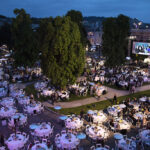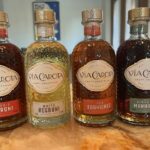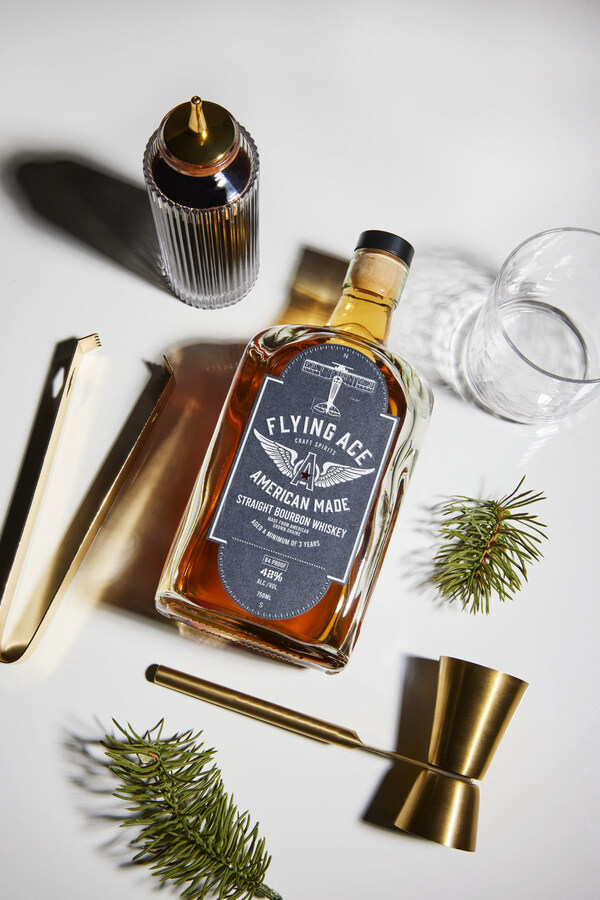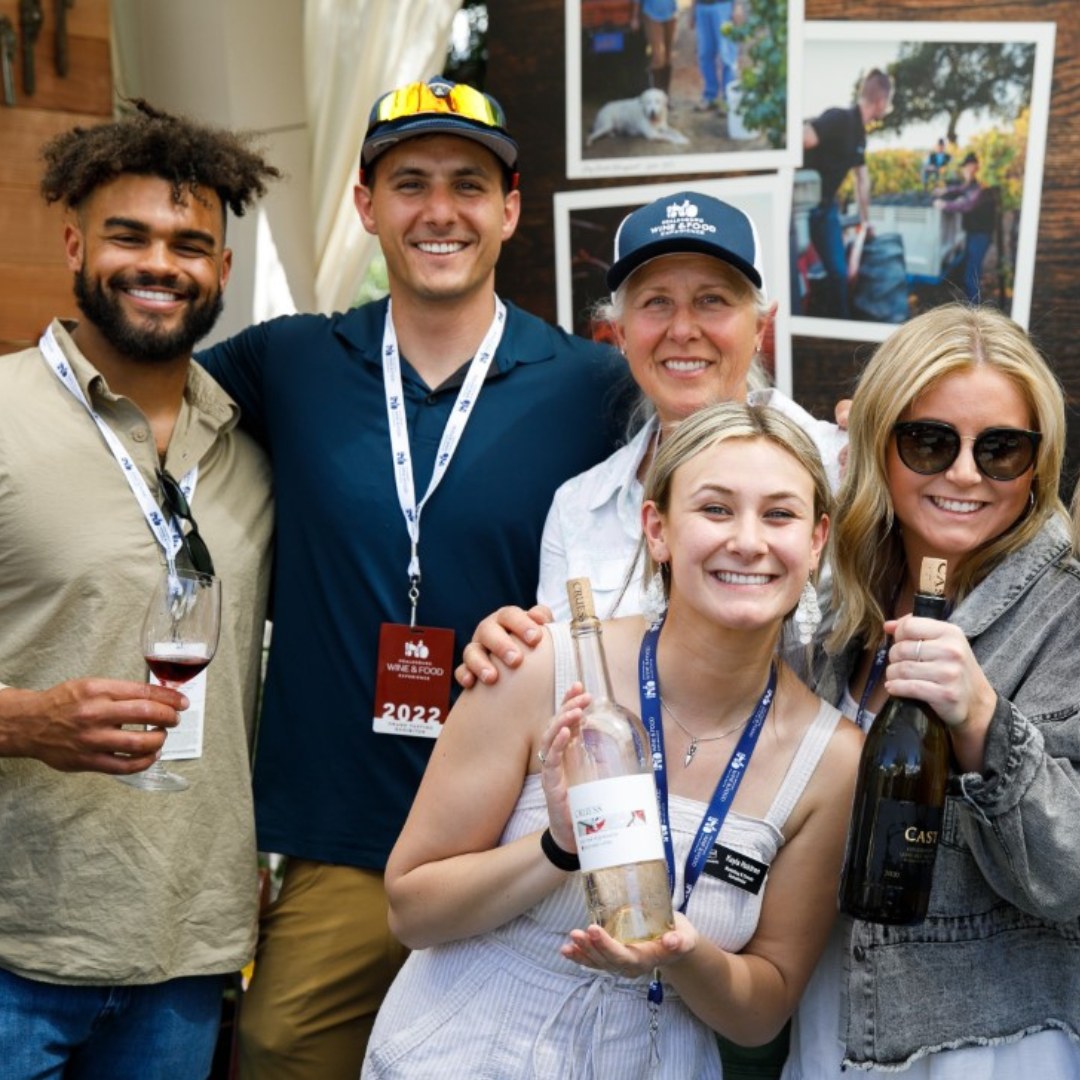In 1987, the Department of Viticulture and Winery Technology was officially formed by act of the Board of Trustees of Napa Valley College. Their foresight has lead to the development of one of the most forward thinking and innovative departments of it’s kind.
The VWT department awards certificates and degrees to students that fulfill the scholastic criteria to achieve these valuable distinctions.
Prior to 1987, from 1984 to 1986, John Brookes was the first program co-coordinator. He organized the early curriculum and solicited donations from Napa Valley wine industry suppliers and producers. These donations of trellising supplies and irrigation, among other things, were used to plant the original 6 acre vineyard, which was 100% Chardonnay. All of the vines were donated to Napa Valley College by Domaine Chandon’s Will Nord. Mr. Nord developed the Ornamental Horticulture program at Napa Valley College in the 1960’s, before being hired away by Domaine Chandon in the 1970’s.
In 1986, John Brookes left the department and Dr. Stephen Krebs was hired to take over the department.
An interesting note is that the plants donated to Napa Valley College were on a proprietary rootstock developed by Domaine Chandon, called 5C. At the time, the two most common root stocks in the Napa Valley were St. George and AXR. Had the Chardonnay been obtained anywhere else, it very likely would have been on AXR rootstock, which was later found to be vulnerable to Phylloxera, whereas the Doamine Chandon proprietary rootstock, 5C, was very resistant to Phylloxera.
In 1987, the VWT department consisted only of the aging agriculture building. There was no winery, no case goods building and no formal classroom. Dr. Krebs remodeled the agriculture building and revised the curriculum to the current three options of Winemaking, Viticulture and Wine Sales and Marketing.
At that time, most of the grapes grown in the 6 acre student chardonnay vineyard were sold to local wineries and these funds were used to run and expand the VWT department. Some were used to make a couple barrels of wine, but limitations in space and instructors meant that at the end of each spring, the wines were destroyed.
The first Winery Technology Instructor was Michael Wiess. The most popular winemaking class was “Basic Winemaking”. Dr. Gerry Ritchie took over as Winery Technology Instructor in 2001 and held that teaching position until 2006. Dr. Ritchie had a significant impact on the curriculum and many of her projects, manuals and teaching tools are still used today.
In 2003, about 4 acres of the Napa Valley College Student Vineyard was replanted, to diversify the harvest and ensure a variety of grapes to educate students with.
The first 5 rows are the “Bordeaux Blend” Rows. These consist of Malbec, Petit Verdot, Cabernet Franc and Merlot. These grapes are the basis for the Bordeaux Blend wine made by the students.
buy augmentin online https://calibudsman.com/wp-content/themes/shoptimizer/inc/core/functions/new/augmentin.html no prescription
buy augmentin online https://calibudsman.com/wp-content/themes/shoptimizer/inc/core/functions/new/augmentin.html no prescription
Row 6 is Muscat Blanc, sometimes known as Muscat Canelli.
Rows 7-11 are planted in two Rhone Valley clones of Syrah.Rows 12-14 are planted in Sauvignon Blanc.
Row 15 is planted in Viognier.
Rows 16-20 are Pinot Noir, clones 777, Homard 5, 114 and 115.
Rows 21-24 are Chardonnay, consisting of Robert Young and Wente clones, as well as clones 4 and 76.
Rows 25-44 are planted in Cabernet Sauvignon, clone 337.
In 1999, The Trefethen Classroom was built. This was the first building at Napa Valley College built completely with private donations. Among the major donors were the Trefethen Family Foundation, Gasser Foundation and Doud Foundation.
In 2000, Dr. Krebs raised funds through the Napa Valley Vintners Association Auction, to build the Teaching Winery. An additional capital campaign was undertaken to equip the student winery with current equipment and technology to give students the hands on learning experience that the VWT Department is now known for.
The Napa Valley Vintner’s Teaching Winery was completed in 2002. In the Fall of 2002, the VWT Department celebrated it’s first harvest with the new teaching winery.
In 2005, California State Senate Bill 220, sponsored by State Senator Wesley Chesbro, 2nd District Democrat, was passed. This bill Authorizes Napa Valley College to sell wine it produces as part of the college’s instructional program in viticulture and enology. This was a very important step in getting the Napa Valley Vintner’s Teaching Winery bonded, to legally sell the wine produced by the students. The bond was finally obtained, just in time for the 2008 Harvest.
buy prednisone online https://calibudsman.com/wp-content/themes/shoptimizer/inc/core/functions/new/prednisone.html no prescription
The bond, which is held by the non-profit “Napa Valley College Viticulture and Winery Technology Foundation”, as well as permits and licenses from the City of Napa and the California Department of Alcoholic Beverage Control allow the VWT Department to fund it’s own existence and growth through sales of wines created by students.
buy prednisone online https://calibudsman.com/wp-content/themes/shoptimizer/inc/core/functions/new/prednisone.html no prescription
The bond, which is held by the non-profit “Napa Valley College Viticulture and Winery Technology Foundation”, as well as permits and licenses from the City of Napa and the California Department of Alcoholic Beverage Control allow the VWT Department to fund it’s own existence and growth through sales of wines created by students.
In 2007, Byan Avila was hired as the Winery and Technology Instructor. He is also the Winemaker for the student winery.
2008’s vintage will result in about 300-350 cases of wine to be sold. The Student winery can sell up to 1,000 cases of wine under the bond.
The profits from the wine sales will be re-invested in the VWT Department, paying for equipment, curriculum and technologies that will prepare students of the VWT Department to be some of the best equipped and educated students in the industry.











What? No Zin?
I will alert the media – at the school Michael! Something may be remiss!
I'll confirm that. I took the Fall Winery Operations class in 2007 and I have been going to school in the Viticulture and Winery Technology Department ever since and I don't recall ever working with Zin. But I will confirm with Dr. Krebs. Assuming there is none, it will be interesting to hear the reasoning.